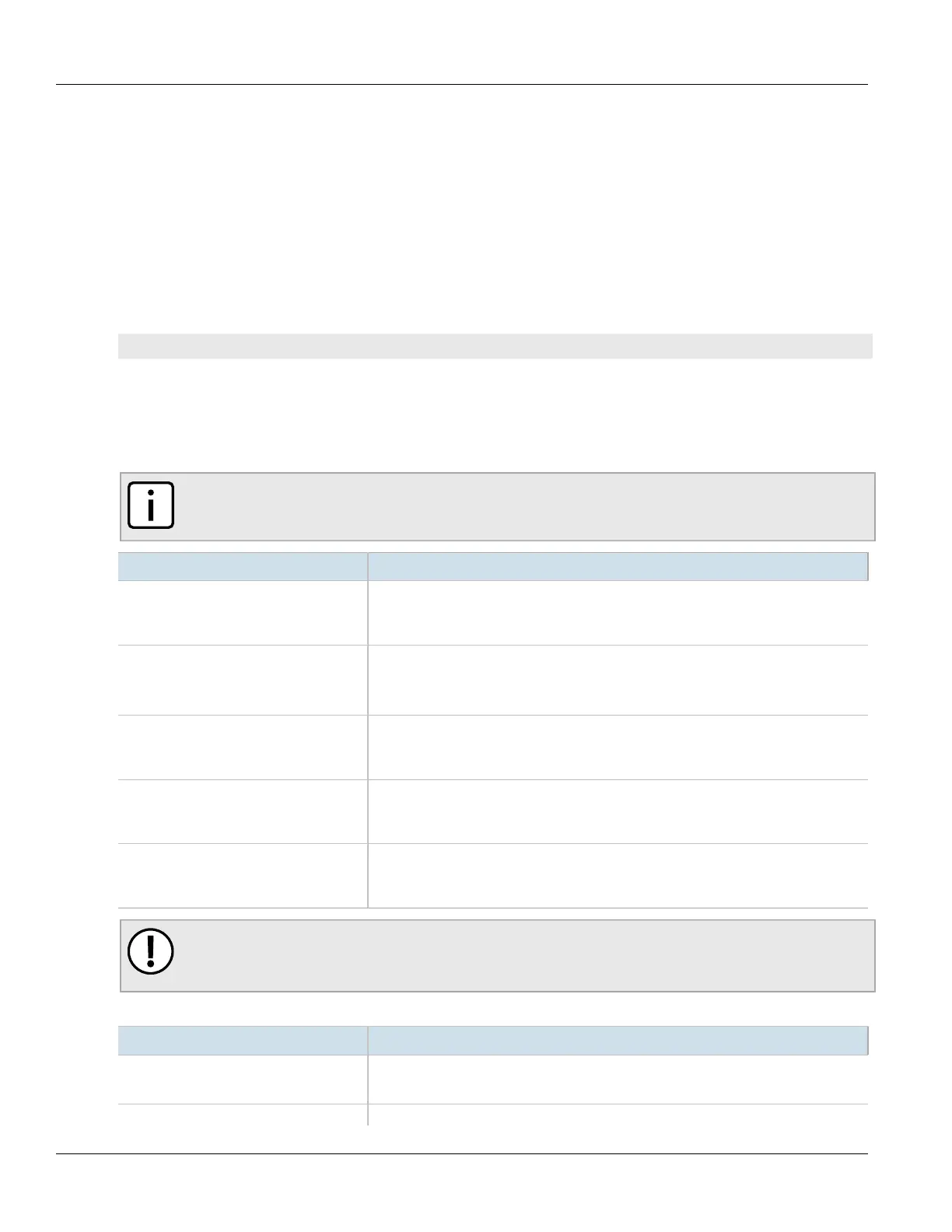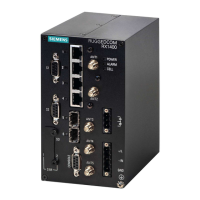Chapter 12
Tunneling and VPNs
RUGGEDCOM ROX II
CLI User Guide
384 Adding a Session
If no sessions have been configured, add sessions as needed. For more information, refer to Section12.4.5.2,
“Adding a Session”.
Section12.4.5.2
Adding a Session
To add a session to a static or dynamic L2TPv3 tunnel, do the following:
1. Make sure the CLI is in Configuration mode.
2. Add the session by typing:
tunnel l2tpv3 [ static | dynamic ] tunnel tunnel-name session tunnel-session
Where:
• tunnel-name is the name of the tunnel
• tunnel-session is the name of the tunnel session
3. Configure the following parameter(s) as required:
NOTE
The Log parameter is only applicable to dynamic L2TPv3 tunnel sessions.
Parameter Description
enabled Synopsis: { true, false }
Default: true
Enables/Disables the session
remote-end-id { remote-end-id } Synopsis: A 32-bit signed integer between 1 and 65535
Remote endpoint ID to identify session with remote system
This parameter is mandatory.
l2tp-specific-sublayer { l2tp-specific-
sublayer }
Synopsis: { default, none }
Default: default
L2TP specific sublayer processing type
mtu { mtu } Synopsis: A 32-bit signed integer between 68 and 9216
Default: 1460
MTU of network interface
log Synopsis: { true, false }
Default: false
Enables/Disables logging session control messages
IMPORTANT!
Configuration of the local cookie should match the configuration of the remote cookie on the
device at the other end of the L2TPv3 tunnel.
4. Type local-cookie and then configure the following parameters as required:
Parameter Description
size { size } Synopsis: { 4, 8 }
Cookie size in byte.
low-value { low-value } Synopsis: A 32-bit unsigned integer
